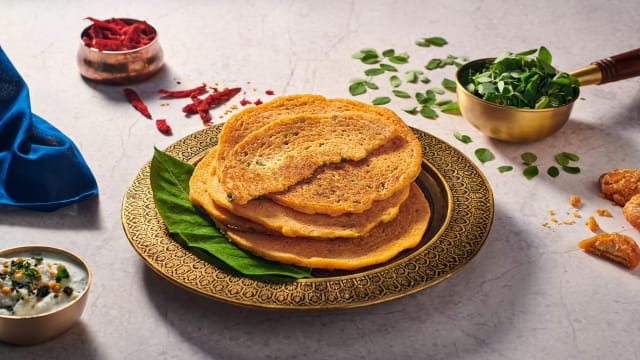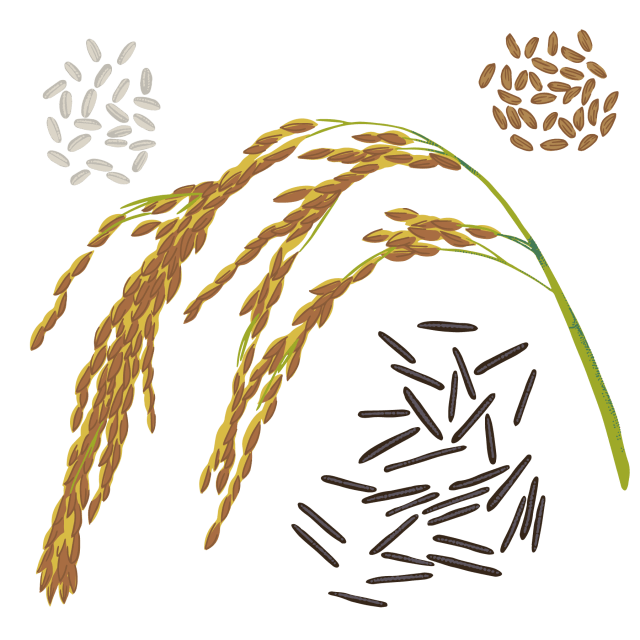
Vendhaya Kal Dosa

Vendhaya Kal Dosa
Description
My earliest memories include Mom making fresh dosas after school—crisp and golden on one side, spongy white on the other. This kal dosa combines fermented lentils and grains with vendhaya (fenugreek), adding digestive benefits and a subtle bitter note. The fermentation enhances nutrient absorption, while fenugreek provides fiber and immune-boosting amino acids.
NOTE
Idli rice, a short grain parboiled rice, is available at Indian grocers and online.
Ingredients
6 dosas MAKES
- ½ cup (100 g) toor dal (skinned and split pigeon peas), soaked for 4 hours
- 1 Tbsp (12 g) urad dal (white lentils), soaked for 4 hours
- 1 cup (200 g) idli rice or any short-grain rice, soaked for 4 hours
- 1 Tbsp (15 g) fenugreek seeds, soaked for 4 hours
- 7-8 curry leaves
- 1 small (30 g) onion, halved (to season the pan)
- Cold pressed sesame oil, neutral cold-pressed oil or ghee for cooking
- 1 Tbsp (17 g) salt
Directions
-
Step 1
Drain and grind the soaked lentils, rice, fenugreek seeds, and curry leaves. Use as little water as possible to achieve a thick paste-like batter. -
Step 2
Heat the dosa kal or a flat cast-iron pan on medium-high heat for 2 mins. Sprinkle some water on the surface, if it instantly sizzles and evaporates, your pan is ready. Add a few drops of oil and use the cut, flat side of a halved onion as a tool to grease the pan evenly. -
Step 3
Reduce the heat and pour ½ cup of batter in the center of the pan. Using the back of the round ladle or a large spoon, gently spread the batter in a circle about 5-inch-wide. With a small spoon, drizzle a few drops of oil around the edges, cover the pan and cook the dosa on medium heat for 3-4 mins. -
Step 4
Once the bottom is browned, use a spatula to flip the dosa. Drizzle more oil around the edges and cook for an additional 30 seconds. Continue to follow these steps to make more dosas. Serve hot off the pan with coconut chutney, podi, or sambar. Store any leftover batter in the fridge in an airtight container for up to 3 days. Bring the batter to room temperature before cooking.
About the author
More by Rakesh Raghunathan

Kanchipuram Idli
Rakesh Raghunathan recreates a heritage recipe, offered as a sacred temple food, that is healing and supports gut health.

Milagapodi
Rakesh Raghunathan’s milagapodi, a nutrient-dense spice blend, is a great condiment for dosas.

Moringa Adai
Fresh moringa leaves amp up the antioxidant quotient of this lentil-based cousin of the dosa in Rakesh Raghunathan’s recipe.






